Well we weren’t expecting life-size concrete elephants, but here they were, dozens of them lining the boulevard, all rearing up in their twinkling jewelled frontlets, trunks poised ready to herald our arrival. And where had we arrived exactly? The pristine sky up ahead was fractured by a hulking vermillion stupa equipped with ornate barbs and a delicate golden finial that caught the sun and flashed high above us. Buddhist statues, golden spires, a parade of concrete elephants... it was hard to comprehend that this was just a housing estate.
Welcome to China. You may have heard, but it’s on the rise. The world’s largest economy by purchasing power and still the fastest growing, churning out 10% average annual growth over the last three decades. Though its not a new player on the scene, of course. The Shang Dynasty had been established for 300 years before Tutankhamun reigned in Egypt. When Socrates was knocking back hemlock in Athens, China’s great philosopher, Kong Fuzi (“Master Kong”, anglified over the years to ‘Confucius’), had been and gone for almost a century. And in 251BC, while Rome was battling for European supremacy in the Punic Wars, Chancellor Lu Buwei was trying to shake off the dangerous affections of the Queen Dowager by hiring a man with an especially large penis to perform a seductive dance while hoisting a large wooden wheel on his willy.*
We’d only been here a few days but we’d been staggered by the size of it several times (China that is, not the man’s penis). The border crossing looked like it was made to hold off dinosaurs, dominated by this vast metal gateway well over a hundred feet high. The duty free was quite a sight too: a carpark of market stalls selling an unfathomable collection of tumble-dryers, jewellery, fluorescent dildos, cauldrons, mobile phone accessories and tins of bear bile. We didn't buy anything. And then once we got going our road was a cyclist's dream: ruthlessly flat, shot straight through the hillsides and suspended soaring over the cultivated valleys below. For a couple of days, riding on that road with that blue sky above us, it was like we were floating through some old cadillac advert.
So really by now the concrete elephants, while obviously not expected, were not exactly incongruous. We pedalled past them and over the wired suspension bridge to the regional capital of Jing Hong. We’d been taken aback by our first Chinese “town”—which we did not expect to have the twin-towered, twelve-storey art deco hotel that greeted us when we arrived—and now we were going to be taken aback by our first Chinese city too. No, not a congested hive of pollution. We arrived into clean air and palm-lined streets. The walkways were swept, the traffic was calm, and between the glass-fronted shopping malls and balconied apartments we found botanical gardens and Thai-style temples basking in the afternoon sun.
Our budget hotel was a little less attractive, cast in concrete with clanging metal steps and loose shower fittings. But we were both far too relieved at getting here to care about any of that. Both of our bikes had been on the verge of terminal catastrophe for weeks. Liv’s wheel rims were dangerously eroded and my tyres and bottom bracket were several hundred kilometres past their usable service lives. We wheeled the wounded machines into an upmarket bicycle shop across the road and left them in the care of the mechanics. Now we had a few days to fix our plans.
The situation was this: we had a one-month visa and a three-month plan that would take us through the Hengduan Mountains and on to the final sprint to the finish line in Tiananmen Square. Our success hinged on two factors. The first was our being able to renew our visas. Renewing a visa twice for one month at a time was technically possible in China, but it required a mountain of paperwork, some of which was virtually impossible for us to provide. For example, we’d need to show proof of our hotel bookings over the entire month for which we wanted to extend. The trouble was, of course, that we rarely knew where we’d end up on any given evening, let alone several weeks in advance.
So that was the first issue and it was as resolved as it could be. The second issue was not.
Every cyclist we’d met over the last few months who’d been up in the mountains had warned us that a large section of the Tibetan Highway was undergoing major reconstruction work that rendered it impassable. Without that road there didn’t seem to be any way for us to get out of the mountains once we got there. Ever since we heard the news, we'd spent many long afternoons staring at maps and delving into internet forums trying to piece together an alternative route, but every track we traced either took us too far north, where our visas would expire before we’d have chance to renew them, or else they led to more dead-ends and broken roads.
As the sun baked the pavement outside, we were sat at the back of a Jing Hong coffee house, surrounded by maps, notepads and guidebooks. It was the third day we'd been there. Our bikes would be ready soon and once we got back on the road there just wouldn’t be time for this level of research again. We had less than a month until we got there. But nothing worked. I glanced glumly at the alternative: a highway diversion around the mountains that skirted all the interesting bits.
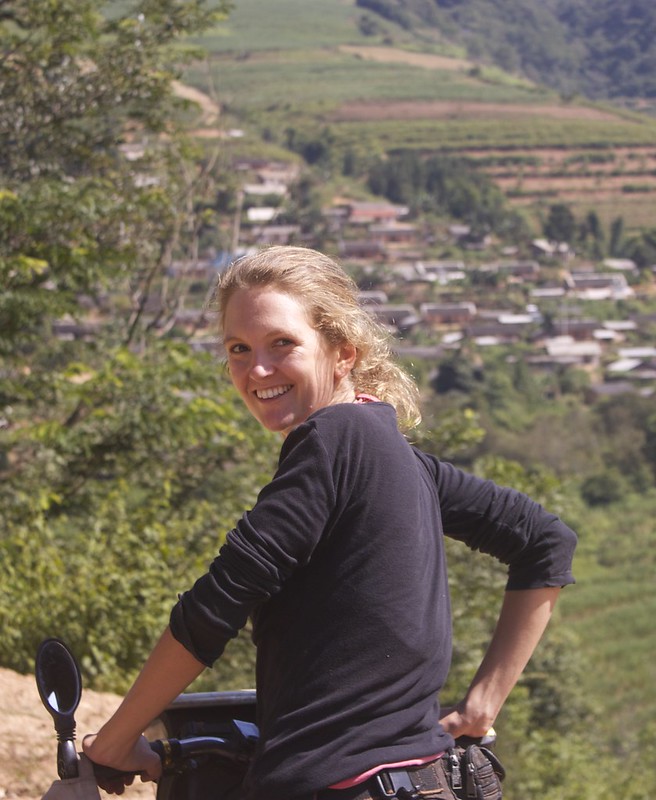 Liv had by now gotten very tired of plotting and replotting routes that never quite worked, so while I was glaring angrily at my map, she decided to take a quick break and take a look at some photos to motivate her. With the Hengduan Mountains zoomed in on Google Maps she hit the ‘photos’ button… and an interesting thing happened.
Liv had by now gotten very tired of plotting and replotting routes that never quite worked, so while I was glaring angrily at my map, she decided to take a quick break and take a look at some photos to motivate her. With the Hengduan Mountains zoomed in on Google Maps she hit the ‘photos’ button… and an interesting thing happened.
“Robin. I think I’ve found it.”
She turned the netbook around and there, running right through a stretch unmarked by any road on any map was a breadcrumb trail of photographs dotted along from the apparent dead end of one trail to link with another a hundred kilometres away. She clicked one of the pictures. It showed a precarious sand track pressed against a sheer drop, and there in the bottom edge of the frame was a black blob. A bicycle pannier. A lone cyclist had found an unmarked trail and geotagged his way down and now we had a track to follow around the closed roads. Our mountain route was on!
* China: A History, John Keay pg 89
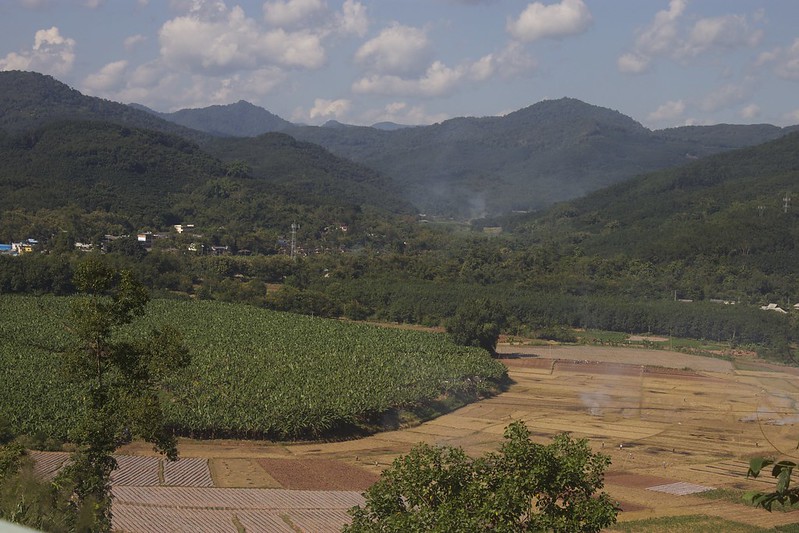



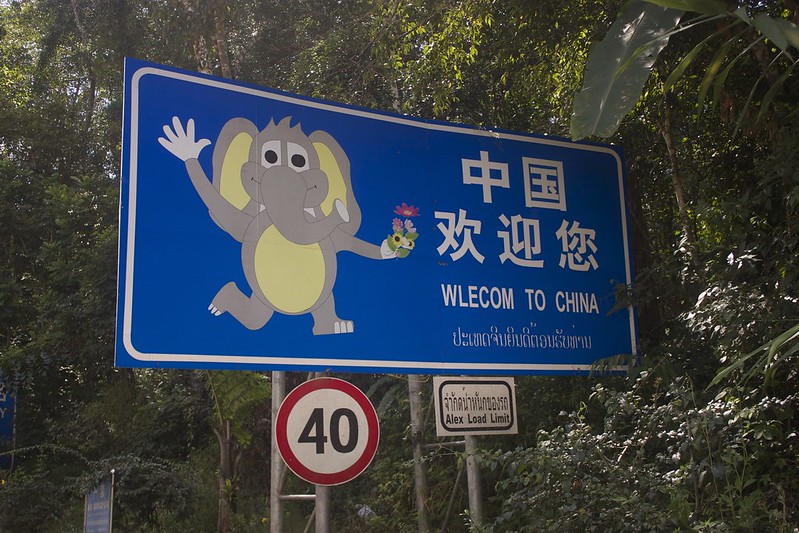

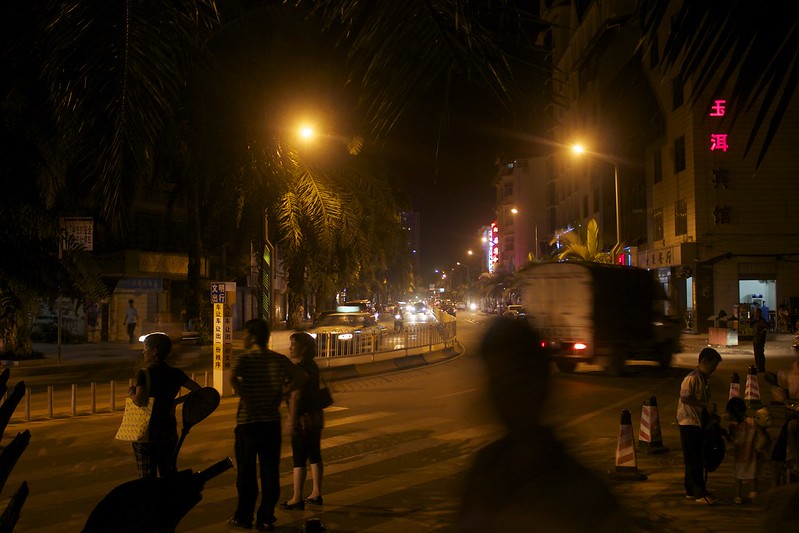

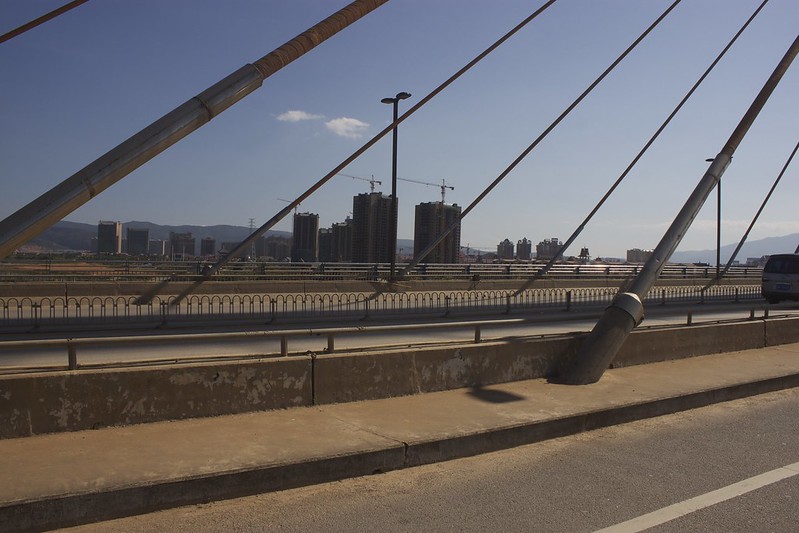
This is great stuff!
ReplyDelete